Dateline – January 26, 2020 – Hutchins, Texas
A few weeks ago, Kathy Rogers with Rogers Wildlife Rehabilitation, invited me down to take a gander at one of the latest developments at the center. As she described for me what to expect, I knew that this was something I would have to see.
At my first opportunity, I gladly made the long drive down to the rehab facility in Hutchins, Texas. When I arrived, I was pleased to be introduced to a copious congregation of Black-bellied Whistling Ducks, the likes of which I had never seen before.
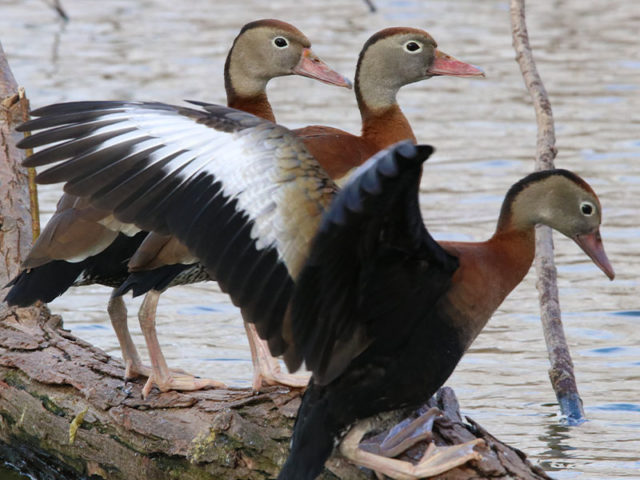
I asked Kathy how did this happen? Where did all these ducks come from?
Her answer did not surprise me. Kathy has a way with birds. Situations like this one have a way of finding her.
What had started out as an extemporaneous feeding of wild ducks in the compact wetlands behind the center, had since morphed into a twice-a-day mass gathering of Black-bellied Whistling Ducks. Somewhere between 500 and 1000 of these beautiful and unusual waterfowl come here every morning, and again in the evenings, to partake of the feeder corn put out for them by the facility caretakers. Somehow the word got out that this was the place to be, and it quickly spread to whistling ducks in all corners of the metroplex!
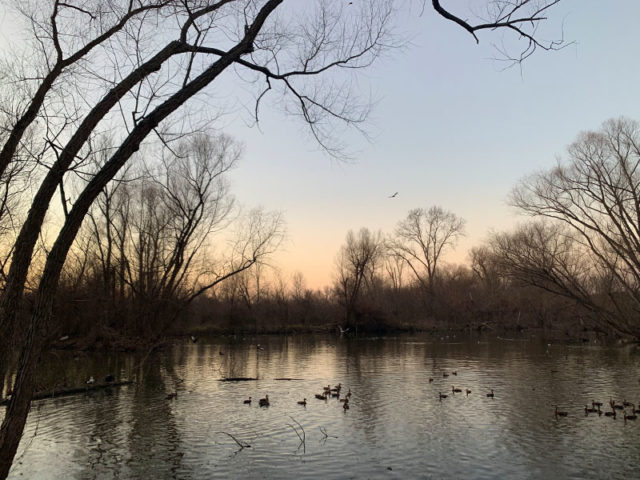
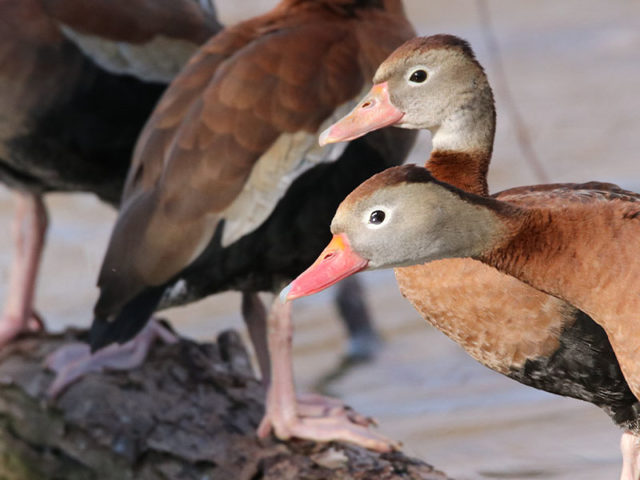
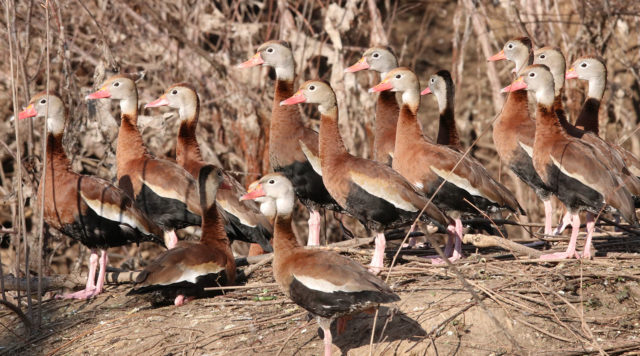
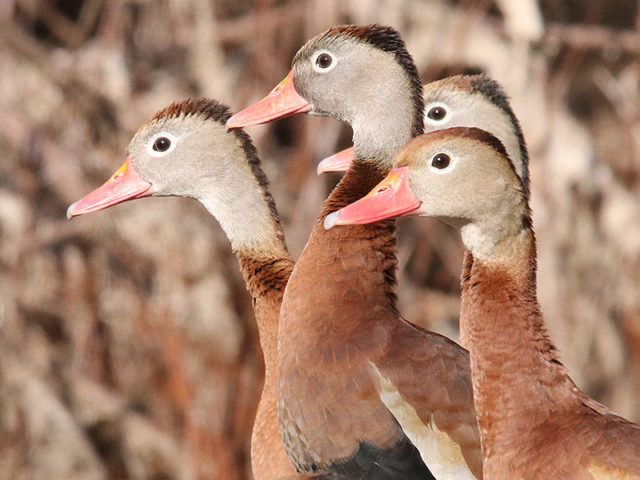
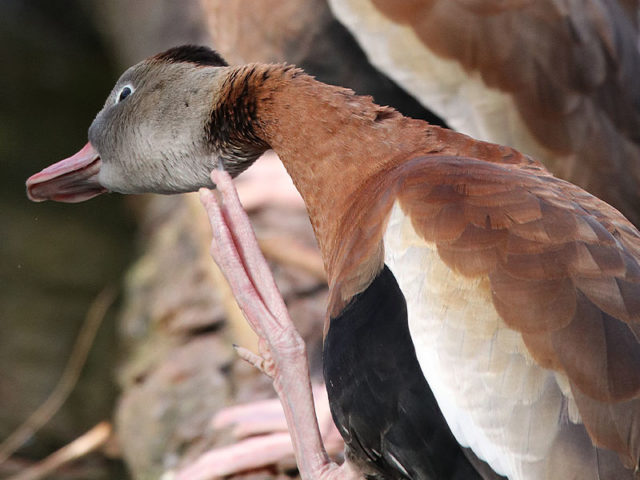

Black-bellied Whistling Ducks are fascinating birds that are only occasionally observed by people in Dallas/Fort Worth. This is how Wikipedia describes them and their habits…
The black-bellied whistling duck (Dendrocygna autumnalis), formerly called the black-bellied tree duck, is a whistling duck that breeds from the southernmost United States and tropical Central to south-central South America. In the US, it can be found year-round in peninsular Florida, parts of southeast Texas, and seasonally in southeast Arizona, and Louisiana’s Gulf Coast. It is a rare breeder in such disparate locations as Arkansas, Georgia, Tennessee, and South Carolina, though it is now a common breeder in parts of central Florida. There is a large population of several hundred that winter each year in Audubon Park in uptown New Orleans, Louisiana. Since it is one of only two whistling duck species native to North America, it is occasionally just known as the “whistling duck” or “Mexican squealer” in the southern USA.
The black-bellied whistling duck is a common species that is “quite tame, even in the wild”. It is highly gregarious, or social, forming large flocks when not breeding, and is largely resident apart from local movements. It usually nests in hollow trees (in South America many times in palm trees). The habitat is quiet shallow freshwater ponds, lakes, and marshes, cultivated land or reservoirs with plentiful vegetation, where this duck feeds mainly at night on seeds and other plant food.

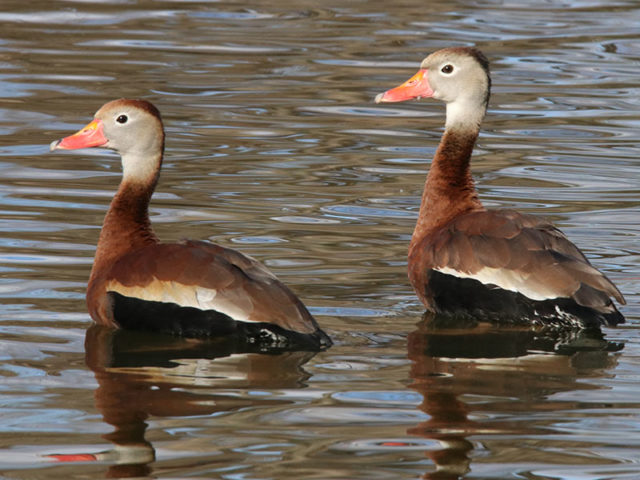
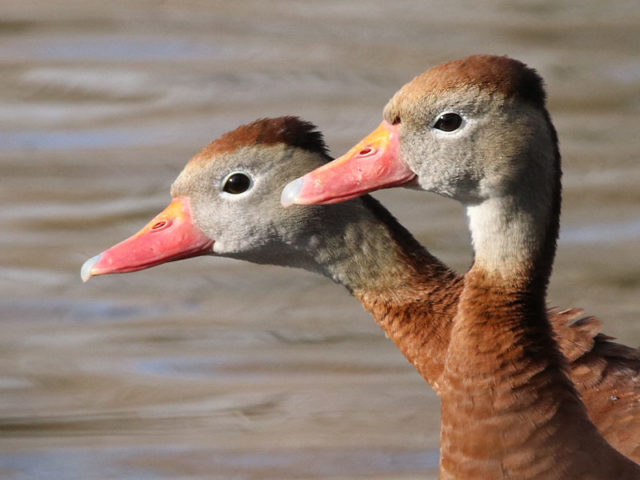
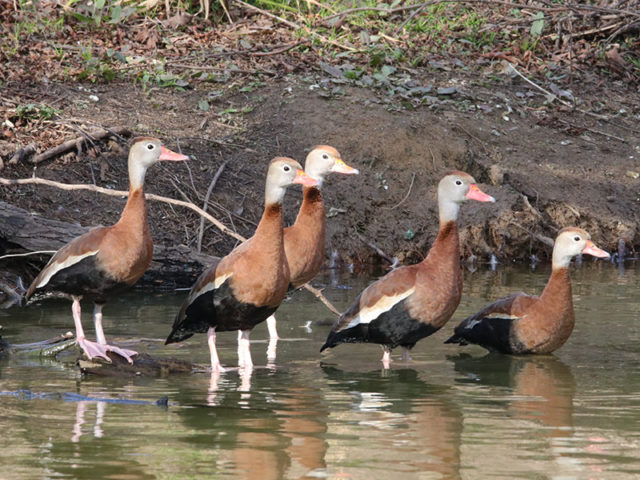
The Black-bellies kept coming the entire time I was at the center, with wave after wave arriving with due regularity. A mix of adult birds and first year juveniles congregated into smaller groups in various places around the wetland—some on dead falls, some on small islands, and some in the water. Once stationed, the noisy ducks prove worthy of their names, producing a cacophony of whistles as they interacted and bickered with each other in interesting and sometimes comical ways.
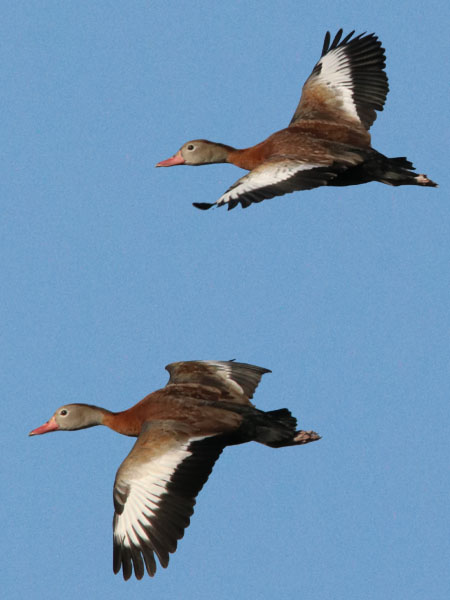
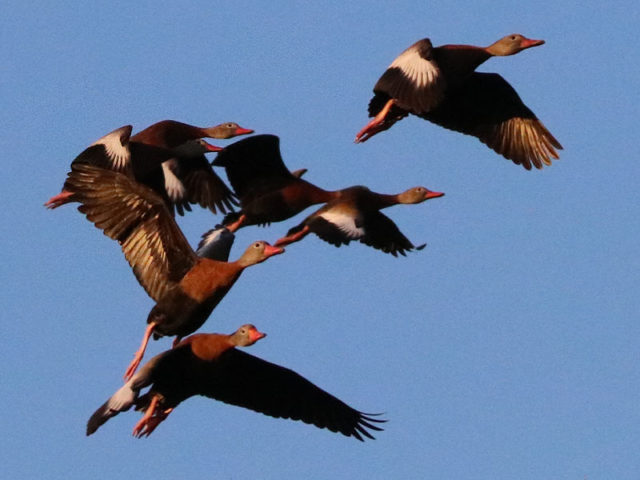
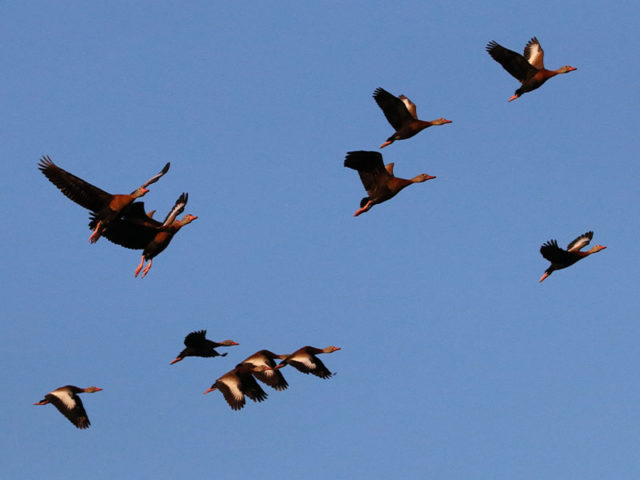

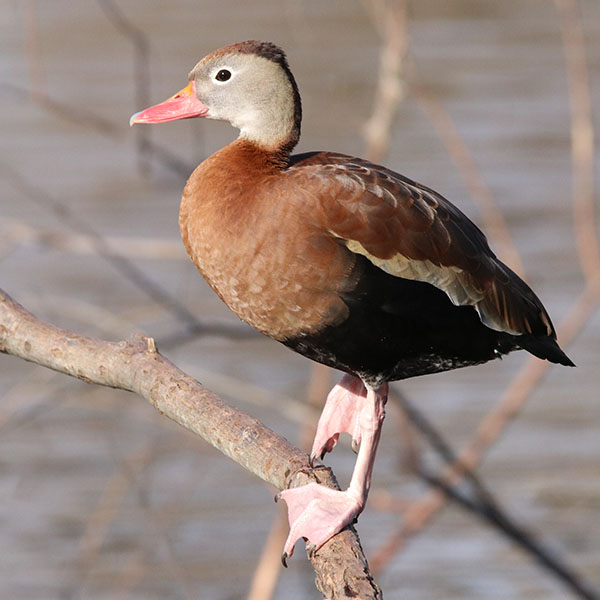
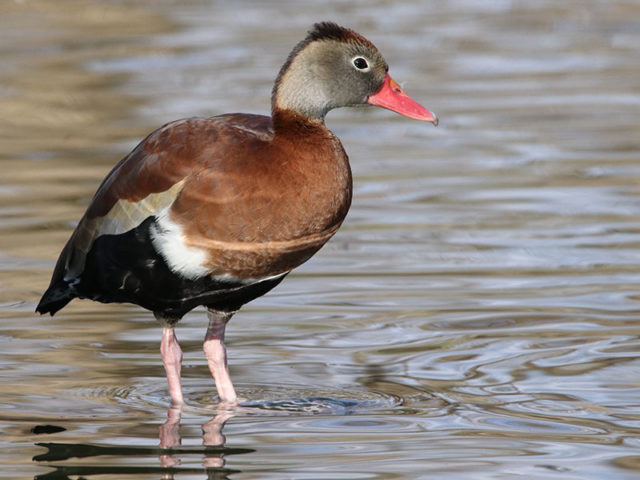

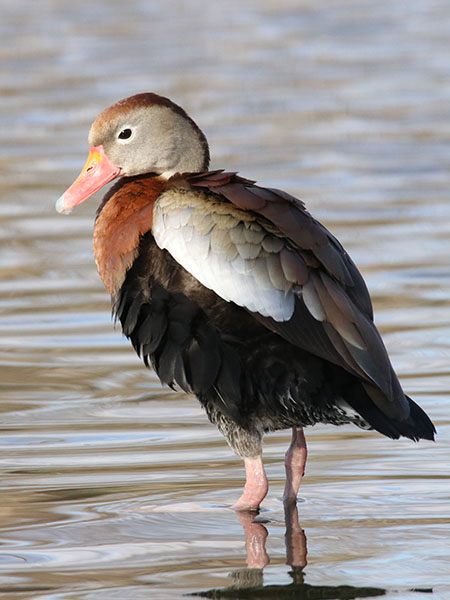
Over the years, I have encountered Black-bellied Whistling Ducks in a number of different places around Dallas/Fort Worth. I have found them everywhere from the remotest-of-remote wetlands in the Trinity River bottoms, to commonplace suburban ponds. The one common thread is that I have never before encountered more than a dozen or so in any given place. To find myself standing in the midst of a thousand or so of these beautiful birds was truly a sight to behold.

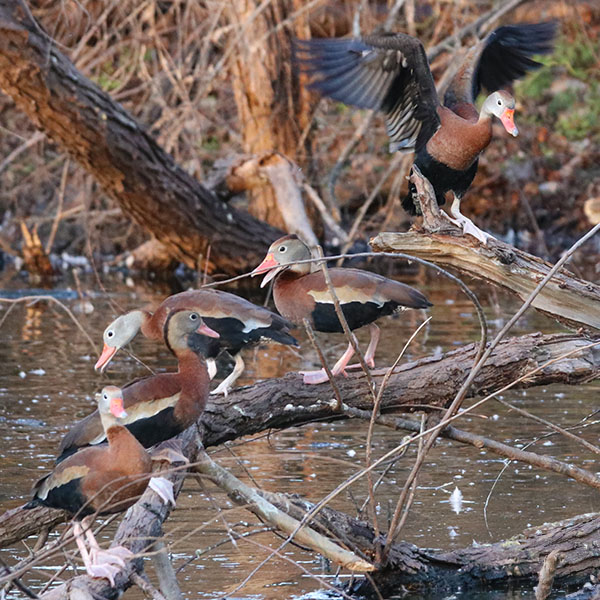
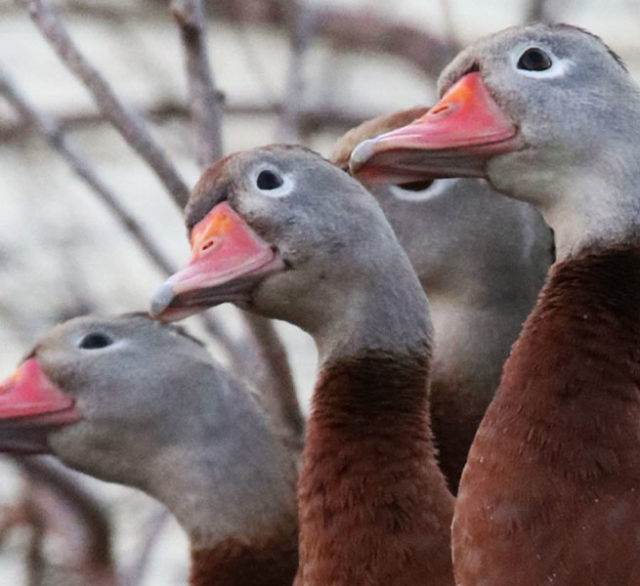

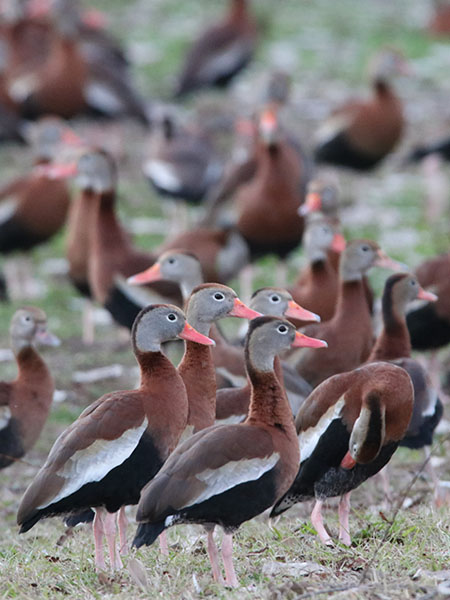
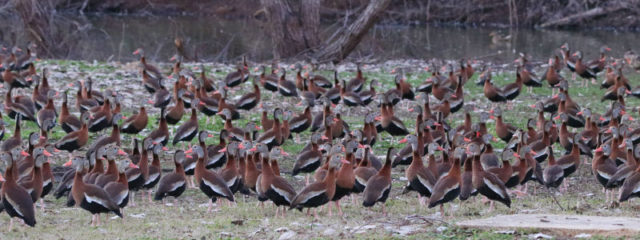

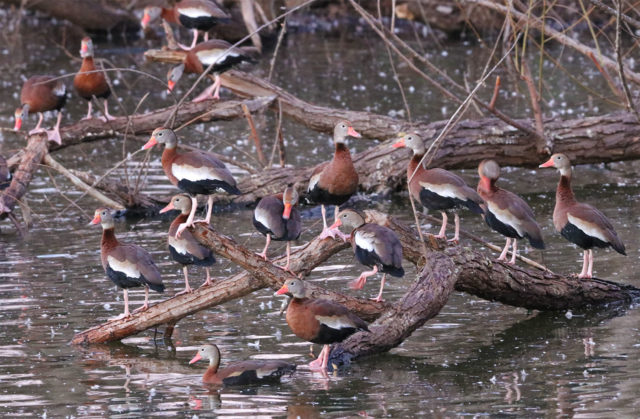
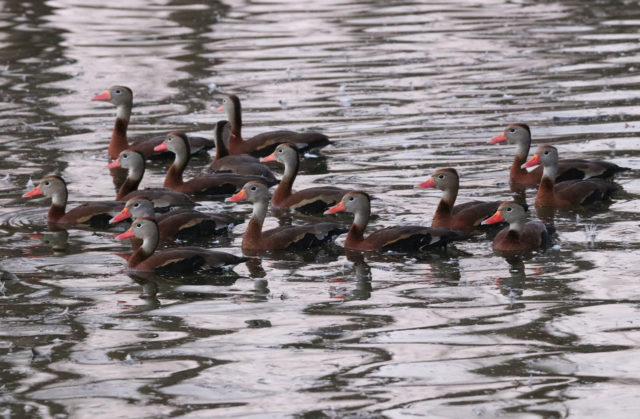
In addition to pictures, I also shot some video footage of this amazing waterfowl extravaganza. In the first video you will find a four minute montage of the sights and sounds at the rehab center. Incongruously, a hunting and fishing club is located in close proximity to the wildlife center. In the second video you can see how the whistling ducks respond to the distant sound of gunfire…
the sounds of gunfire from a nearby hunting club
To facilitate this amazing wildlife spectacle, Rogers Wildlife goes through six 50lb bags of feeder corn everyday. That’s what’s required to keep these beautiful ducks well fed and coming back for more.
The approach of dusk cut this photo session to an all too soon end. As I was preparing to leave, Kathy mentioned to me that they always welcome photographers at the center, but she reminded me that Rogers Wildlife Rehabilitation Center depends on donations for their continued operation. Please keep this in mind if you would like to stop by. A generous contribution of a big bag of feeder corn—or other items from their donations wish list—would be much appreciated. It is a small price to pay for admission to a show like this!
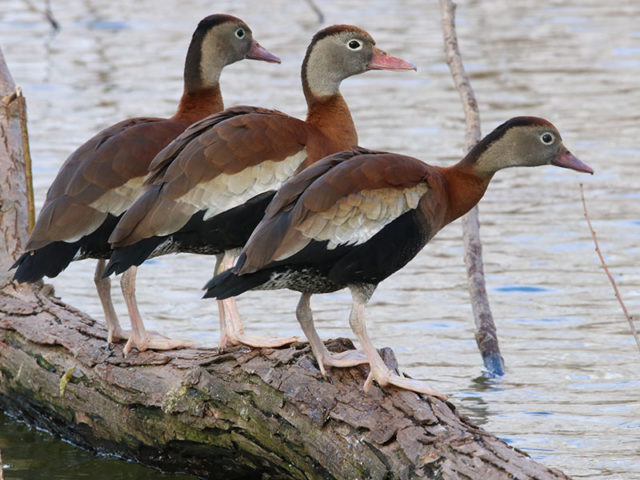

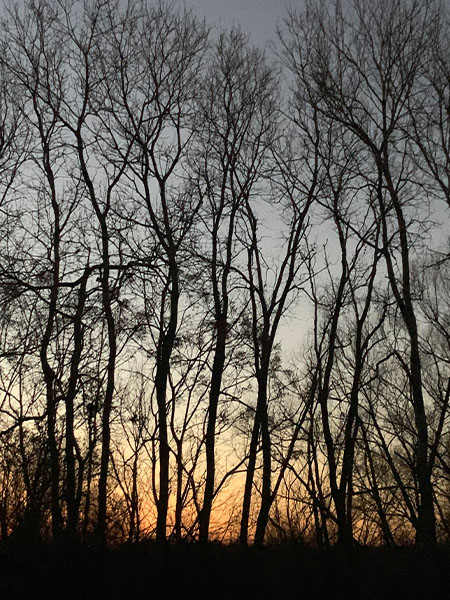


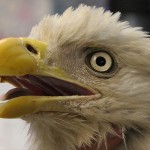
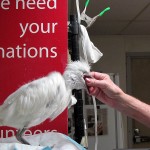


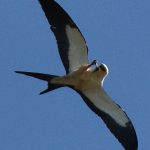
I live in balch springs texas until this spring, I have never seen a blackbellied whistling duck, but they’ve been coming now and feeding at my birdfeeders for a couple months now is this rare for the DFW area